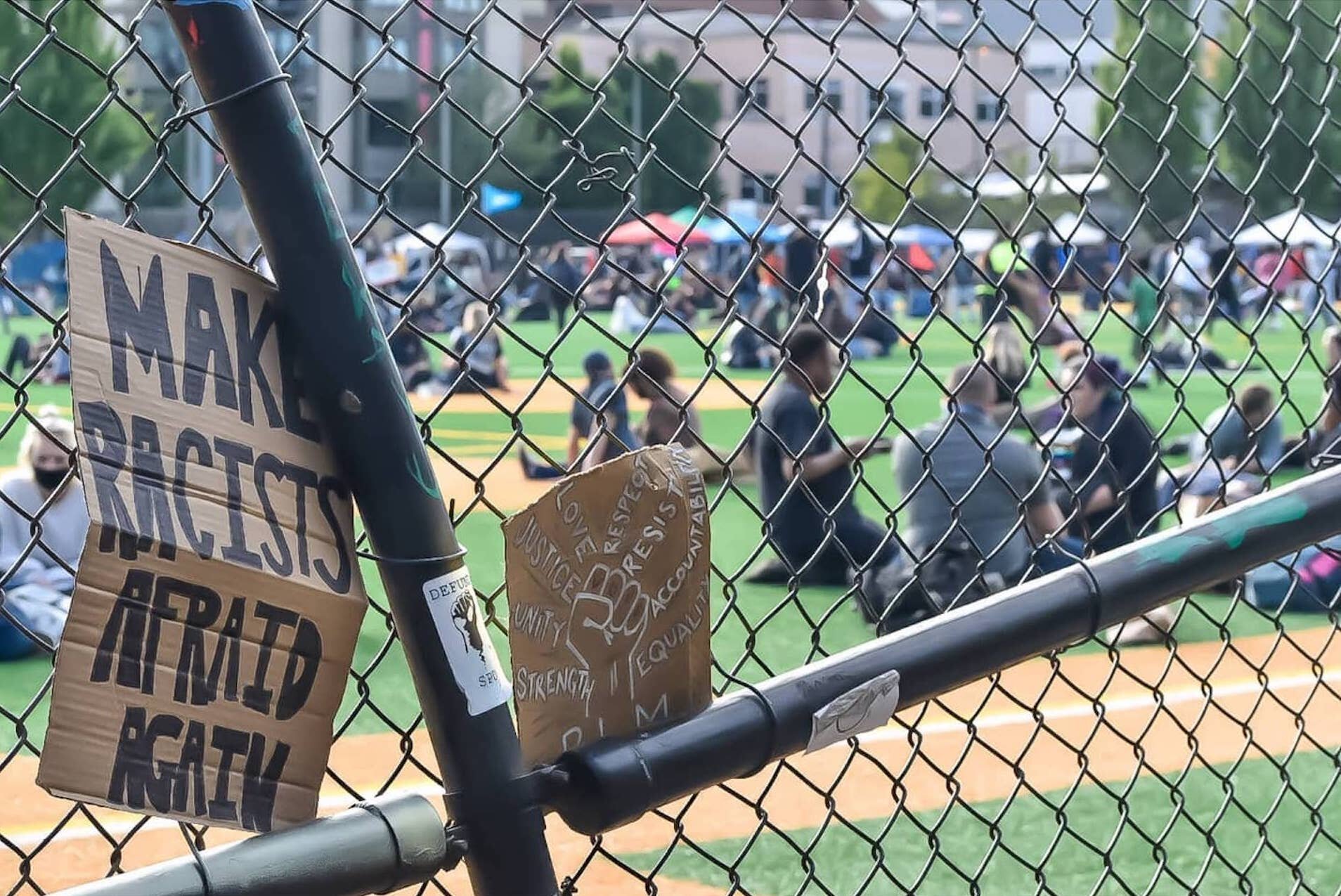CHOP community plans to minimize drug and alcohol abuse
By Alexa Peters
Photo by Shannon Strauss
Please donate to support local, independent journalism.
Last week, KUOW reported that within the Capitol Hill Organized Protest (CHOP), “there are two clear, different groups of people who are showing up every day,” and that “many in Cal Anderson Park are hanging out there, drinking a beer. They say that the occupation is the point of the protest. But a lot of Black activists are really upset that this is starting to look like a block party.”
This week, that concern among Black activists has come to a head, especially after “a volatile mixture of fireworks, alcohol and firearms triggered violence” on Friday night, resulting in the death of 19-year-old Lorenzo Anderson.
Hence, as CHOP continues to morph and grow as a community, organizers are proposing some ideas to better monitor drug and alcohol use within the zone in order to keep the focus on the movement’s three demands: defunding the police by 50%, reallocating SPD funds to communities of color, and dropping all charges against protestors.
“I made the suggestion that no drugs or hard alcohol, nobody walking around drunk, because it dilutes everything,” said Rick Hearnes, a volunteer security guard and part of the team overlooking community project management within CHOP. “We don’t want it in here. People think they can walk around here with immunity. They’re not focused or in the right frame of mind.”
Hence, on June 21, Voices of CHOP (@ChopVoices), a new Twitter account run by and for volunteers, activists, and allies of the current 2020 BLM protests and the occupied zone, posted an open letter to the CHOP community stating some new policies around drug and alcohol use within the occupied zone. Their letter proposed three changes major changes, to be further discussed in the People’s Assembly this week.
Firstly, the organizers and activists behind this letter proposed the creation of “safe use” areas on the outskirts of the CHOP, to keep substances a safe distance away while also being conscientious that drugs and alcohol may be one of the only coping mechanisms people of color have to deal with trauma.
“We’re still trying to figure it out, to be blatantly honest,” said Sophia Maziraga, an organizer who spoke about the issue at the People’s Assembly on June 21. “BIPOC use alcohol and drugs to suppress trauma. We are trying to come up with a plan for trauma-informed harm reduction.”
Their second idea is to put in place some suggested hours of operation for CHOP — 8 a.m. to 8 p.m. According to their letter, this would help decrease the instances of substance-fueled violence and lessen the load on overnight volunteer security and medics.
Cat, who declined to give his last name, is a security guard who works night and day shifts for CHOP. He says nighttime is the time when the majority of substance-related issues arise in the community.
“We’re intervening when people get belligerent, and for the most part it’s the same few people,” he said. “And it’s often the homeless in the area.”
By instating suggested hours for CHOP, the organizers hope that this will thin out the bodies on the ground, but most importantly, encourage protestors and occupiers to rest, which “is important to keeping the community healthy and level headed,” according to the open letter.
The letter also addressed that organizers are deliberating on how to better communicate on safety matters within the CHOP. According to their letter, standard social media has been challenging, and new Signal/Telegram groups need to be organized so that brawls and other violence may be attended to as quickly as possible.
Photo by Sara Bromling
In the end, Mizaraga says issues of drugs and alcohol abuse within the CHOP are just part of a larger discussion around providing people of color access to other methods for dealing with trauma. And, ideally, Mizaraga hopes that by bolstering the coordination between mental health volunteers and volunteer medics in CHOP they can decrease instances of drug and alcohol abuse within the space.
“Mental health is one of our primary focuses,” she said. “When we break out [into discussion groups] we want there to be individuals who area available for peer support, and that’s going to be whether it is people who have those qualifications or if they have lived experience.”
In a meeting among organizers on June 20, Mizaraga says they had a very “effective” discussion about how to proceed with providing more mental health opportunities within the CHOP. To that end, those volunteer medical providers and activists who are willing to provide assistance to peers having mental health issues are going to wear yellow duct tape arm bands.
“You can talk with them. No judgement,” she said. “We’re going to have them practice trauma-informed care so that we can continue on with the movement.”



